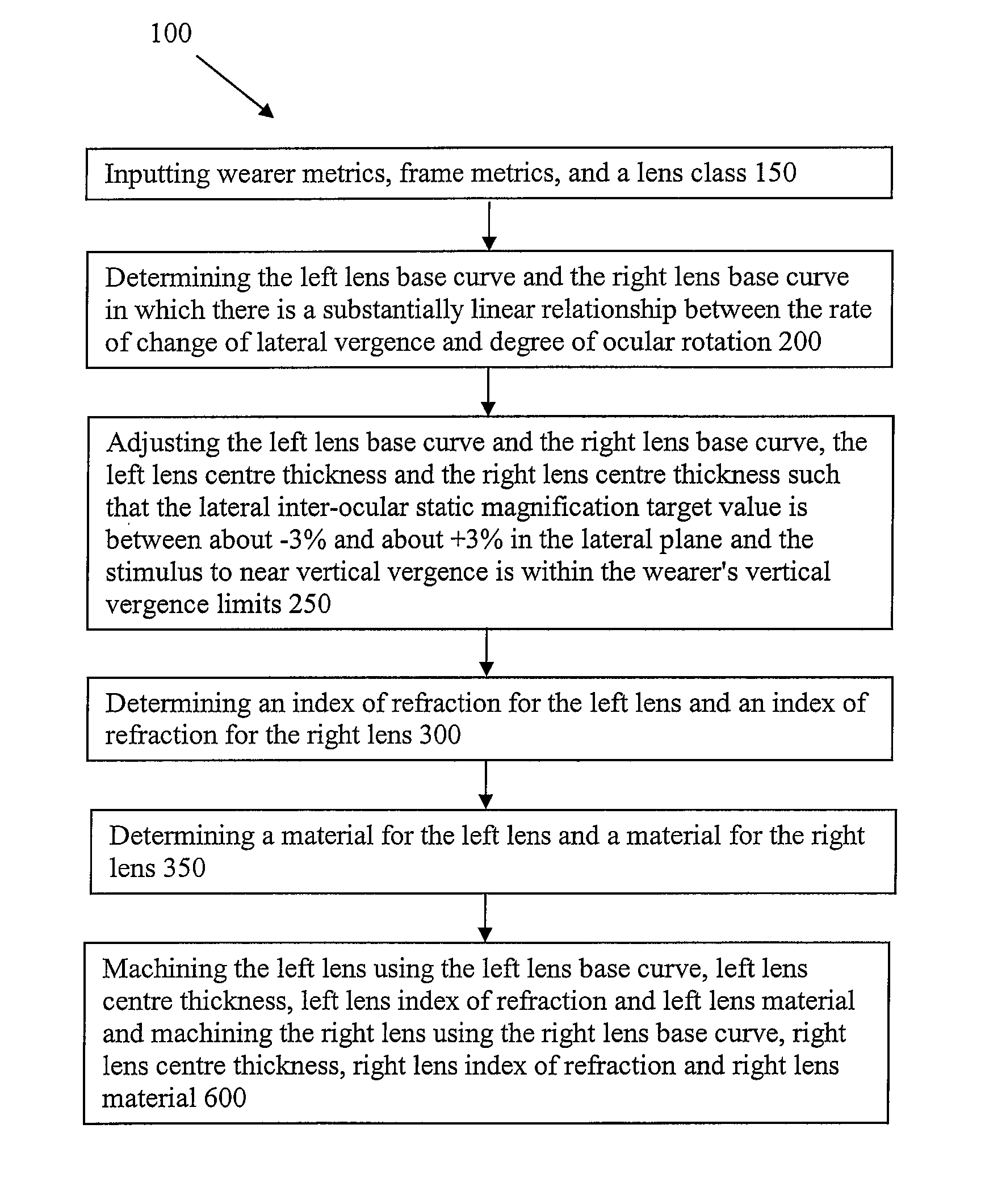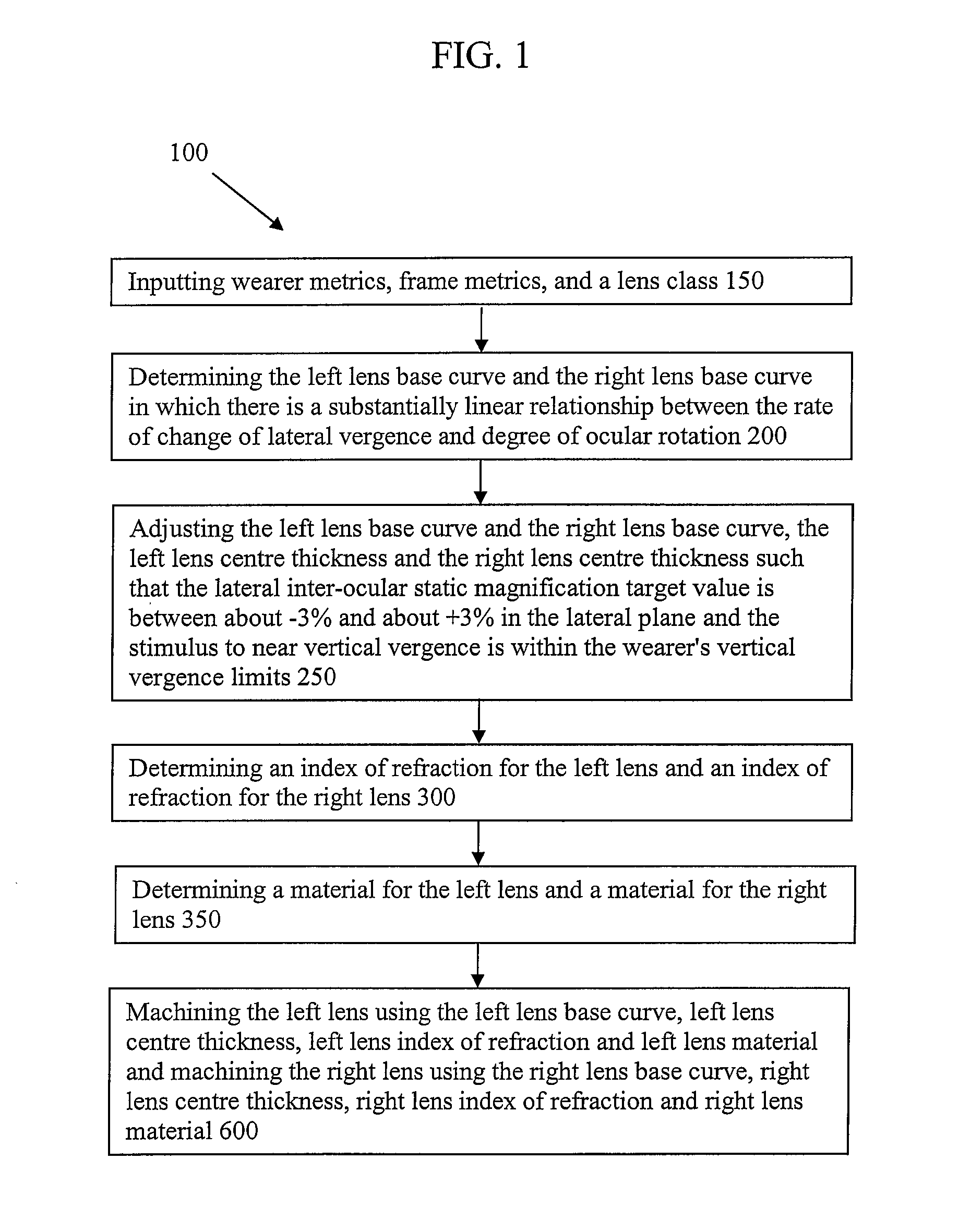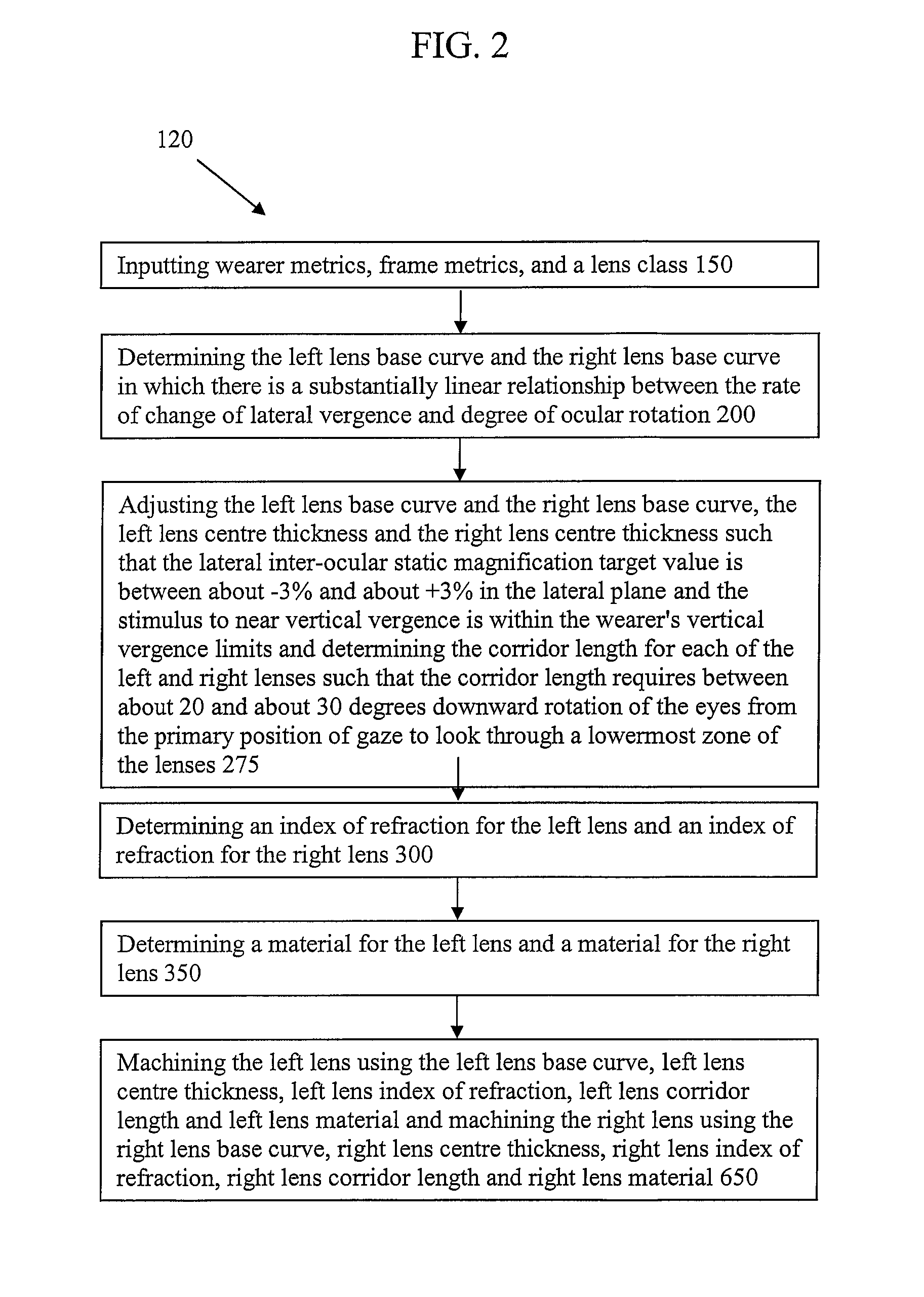Spectacle lenses and method of making same
a technology of spectacle lenses and lenses, applied in the field of spectacle lenses, can solve the problems of binocular vision distortion, eyeglasses also distort the perceived position of objects, fattening or thinning objects, etc., and achieve the effect of reducing binocular vision distortion
- Summary
- Abstract
- Description
- Claims
- Application Information
AI Technical Summary
Benefits of technology
Problems solved by technology
Method used
Image
Examples
Embodiment Construction
[0023]Embodiments of the present invention are generally directed to spectacle lenses which may reduce induced binocular vision distortions such as aniseikonia and anisophoria for individuals with anisometropia.
[0024]Embodiments of the invention may be used by optometrists and physicians to assist in the design and manufacture of spectacle lenses according to methods that take into account the design and fit of the spectacle frame. Embodiments of the invention employ a process which specifies front curve radii (base curve) and centre thickness of the respective lenses in a pair of spectacles which may mitigate the effects of anisometropia, and the resultant aniseikonia and anisophoria due to spectacle correction.
[0025]According to an embodiment as shown in FIG. 1, a method of making a pair of spectacle lenses 100 comprises steps of inputting wearer metrics, frame metrics, and a lens class 150, determining the left lens base curve and the right lens base curve in which there is a sub...
PUM
 Login to View More
Login to View More Abstract
Description
Claims
Application Information
 Login to View More
Login to View More - R&D
- Intellectual Property
- Life Sciences
- Materials
- Tech Scout
- Unparalleled Data Quality
- Higher Quality Content
- 60% Fewer Hallucinations
Browse by: Latest US Patents, China's latest patents, Technical Efficacy Thesaurus, Application Domain, Technology Topic, Popular Technical Reports.
© 2025 PatSnap. All rights reserved.Legal|Privacy policy|Modern Slavery Act Transparency Statement|Sitemap|About US| Contact US: help@patsnap.com



